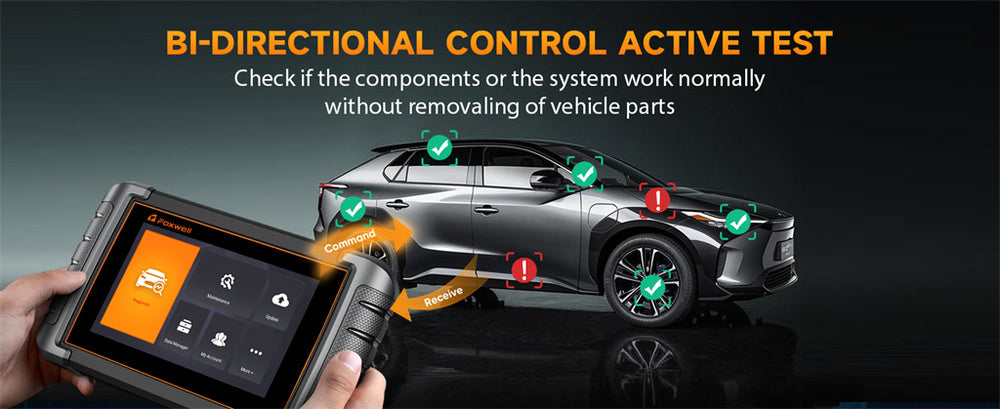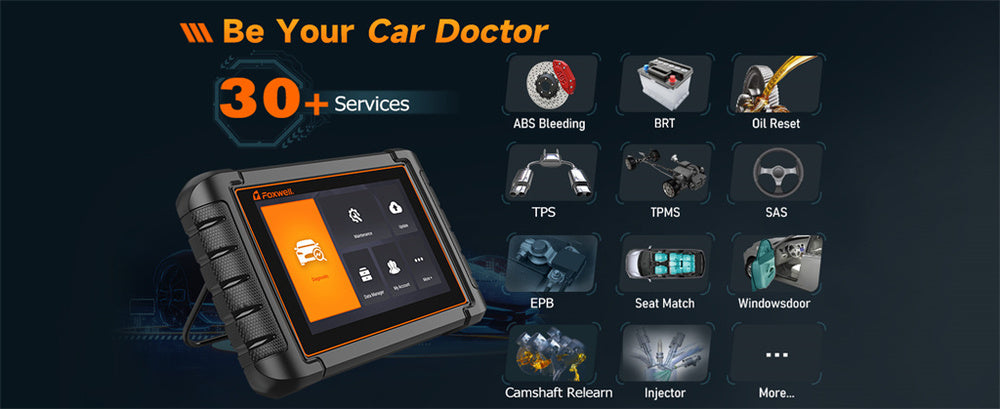When your car starts acting up, one of the first things people tend to do is grab a code reader to see what's happening.
These handy devices have become go-to tools for diagnosing car problems with error codes that provide insight into possible solutions.
However, when diagnosing more severe issues such as transmission trouble, they often leave people baffled as it's unclear whether these tools can provide this level of help.
Therefore, car owners must fully comprehend what these devices can and cannot do before turning them loose!
Can a Code Reader Detect Transmission Issues?

In short, yes. However, depending on their type and user requirements, code readers sometimes cannot pick up specific transmission problems.
Modern vehicles typically include an onboard computer system known as the Engine Control Unit (ECU), which monitors various car components, including the transmission.
If something goes amiss with any part of the transmission or other system in your car, the ECU generates an error code that can be read with a code reader.
P0700 is an example of a common code related to transmission problems. This code indicates a general transmission issue but doesn't reveal specifics.
Instead, it acts like an alarm light that indicates "something's amiss here" without specifying its cause.
Advanced code readers and scanners can give more comprehensive data. They might display error codes such as P0715 for transmission input/turbine speed sensor problems; such a level of detail can be invaluable, though it won't reveal every piece of information.
Some mechanical transmission problems, such as shifting slipping or not occurring smoothly, might not set off any codes at all until they become severe enough for your ECU to notice.
How Transmissions Work
Understanding why code readers don't catch all transmission issues helps to know how transmissions operate.
Transmissions are an essential component of your vehicle, responsible for shifting gears and keeping the engine operating at optimal speeds at different speeds. There are two primary types of transmissions - automatic and manual.
Automatics handle shifting automatically, while manual ones require you to use clutch and gear stick mechanisms to move them manually.
Transmission problems typically include slipping gears, delayed shifting, overheating, and strange noises.
These problems could be due to any number of reasons—low transmission fluid levels, worn-out parts, or internal damage—but other issues might not trigger an error code at first—for example, if your transmission fluid levels drop suddenly but your ECU doesn't notice until overheating occurs!
Mechanical issues like worn gears or clutch failure in manual transmissions often cannot be detected using a code reader; such issues usually require physical inspection by an expert mechanic.
Limitations of Relying Solely on Code Readers
While code readers can be helpful tools, they're not an all-in-one solution; they only reveal what the car's computer knows - and this only gives partial answers.
Here's where code readers fall short:
Limitation: Code readers typically only detect issues that prompt a specific code. If the problem doesn't warrant such an alert, it won't appear during a scan.
Code Readers Cannot Provide Mechanical Diagnosis: Code readers cannot detect mechanical problems like worn gears, failing clutches, or any physical damage; these require direct inspection by trained staff.
Relying solely on a code reader could give you a false sense of security; just because no codes are present doesn't mean your transmission is in perfect condition.
As such, a code reader must serve as only one tool in your diagnostic arsenal. However, if you suspect any transmission-related problems, a professional inspection is always advised - even if a code reader didn't show any discrepancies.
Steps to Take If You Suspect a Bad Transmission

So, what should you do if you suspect your transmission may be malfunctioning? Here is a practical step-by-step guide:
- Utilize Your Code Reader: Start by running diagnostics with your code reader, such as the Foxwell NT809TS.
This advanced code reader does more than just basic diagnostics.
It offers comprehensive scanning, including the ability to detect transmission-related codes.
With its intuitive touchscreen, it’s easy to use and covers a wide range of vehicles. It’s perfect for DIY diagnostics, giving you insights into what might be wrong before you consult a mechanic.
- Check Transmission Fluid: Low or dirty transmission fluid can create numerous issues for drivers. Ensure your fluid levels are correct and that its condition remains optimal.
- Listen and Feel: Keep an eye on how your car drives. Do the gears shift smoothly?
Are there any odd noises coming from it, or is the transmission slipping?
These could all be telltale signs that something is amiss, even if a code reader doesn't show any problems.
- Consult a Mechanic: If the issue seems more complex or you need professional guidance, take your car for further evaluation by an expert mechanic.
They will perform more extensive inspections that could detect issues that a code reader missed.
- Do Not Ignore the Issue: Transmission issues rarely resolve themselves on their own, so if any symptoms appear, it's wiser to address them sooner rather than later - otherwise, more extensive damage and higher repair costs could ensue.
Utilizing a reliable tool such as the Foxwell NT809TS and following these steps can give you an excellent overview of your car's health and enable you to take appropriate steps to keep it running smoothly.

Conclusion
A code reader can be an invaluable aid for diagnosing transmission problems. Still, it should never be treated as the ultimate authority.
While certain issues may trigger error codes on their own, knowing when it comes time for professional assistance and understanding its limitations will save time, money, and headaches in the long run.
If your transmission appears to be acting up, get started - regular maintenance and timely repairs are crucial to keeping it running efficiently.
FAQs
Will a bad transmission show a code?
Yes, but it depends on the problem. Some transmission issues trigger specific error codes that can be detected by a code reader, while others, particularly mechanical issues, may not show a code.
What code reader can read transmission codes?
The Foxwell NT809TS is a reliable code reader that can detect transmission-related codes and offers detailed diagnostics, making it a good choice for identifying potential transmission issues.
Does a diagnostic test show transmission problems?
A diagnostic test can show some transmission problems, especially if they trigger an error code. However, it may not detect all issues, particularly mechanical problems, which might require a physical inspection by a mechanic.




Leave a comment
This site is protected by hCaptcha and the hCaptcha Privacy Policy and Terms of Service apply.